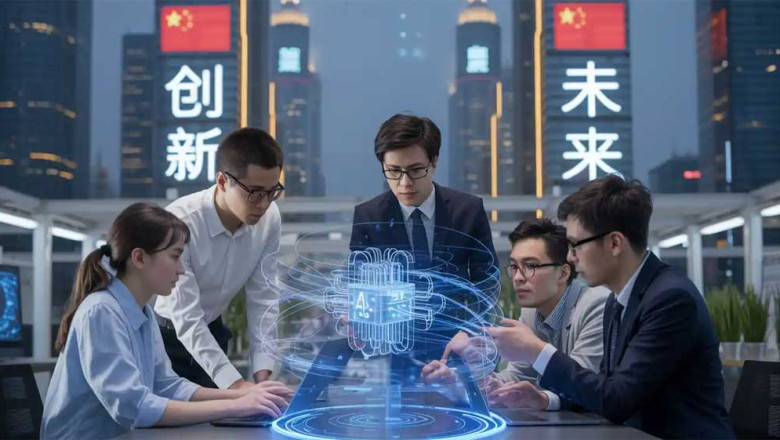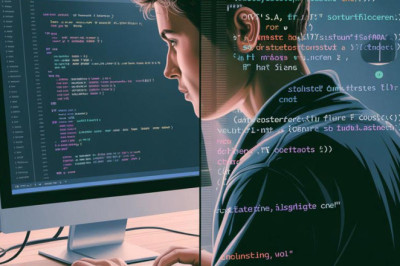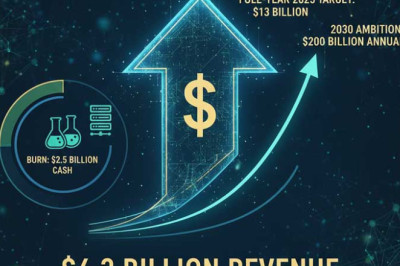
views
Background: A New Funding Wave for AI Startups
In April 2025, China pledged $8.5 billion in support for young AI startups, reflecting a strategically coordinated effort to accelerate domestic innovation and help emerging local firms acquire world-class capabilities12. This funding is intended to fuel research, development, and commercialization for early-stage AI companies, ensuring that China’s AI sector remains dynamic and globally competitive.
State-Driven Industrial Policy: The Core of China’s AI Strategy
China’s approach to AI development strongly echoes its previous successes in other high-tech sectors like electric vehicles and solar energy. This industrial policy model features:
-
Comprehensive state support: Investments and incentives across the AI value chain, including semiconductors, data centers, cloud resources, and talent acquisition12.
-
Coordinated action plans: National and local government strategies (such as the 2017 AI development plan and “Made in China 2025”) emphasize rapid AI integration into sectors like public services, transportation, and manufacturing23.
-
Subsidized compute and research infrastructure: Direct support for AI labs and startups to access advanced computing hardware and facilities.
-
Talent cultivation: Scholarships, research funding, and international recruitment to build a robust AI workforce.
Results: Narrowing the US-China AI Gap
China has made notable progress in closing the gap with the US in several aspects of artificial intelligence:
-
Rapid advancement in open-source models: Chinese firms such as DeepSeek and Alibaba now produce AI technologies globally recognized as competitive with leading US offerings145.
-
Improved AI model performance: The gap between the best Chinese and US AI models has shrunk from over 9% in 2024 to less than 2% by early 2025, indicating a fiercely competitive global landscape67.
-
Growth of domestic AI ecosystems: The success of local open-source and application-driven models demonstrates China’s reduced reliance on US platforms and increased ability to set global benchmarks45.
-
Widespread adoption: China’s AI adoption is expanding rapidly across sectors like electric vehicles, healthcare, and robotics, reflecting strong alignment between policy, industry, and research23.
Challenges and Limitations
Despite these achievements, key bottlenecks remain:
-
Limited access to cutting-edge AI chips: US-led export controls on advanced semiconductors constrain the compute resources available to Chinese AI developers, forcing trade-offs and dampening the pace of some projects248.
-
Efficiency issues: Some state-directed subsidies result in wasteful or inefficient allocation of resources, such as the bulk distribution of AI chips regardless of a startup’s readiness or focus2.
-
Persistent but shrinking performance gap: While China is closing in, the US continues to lead in segments such as frontier model innovation, large-scale training, and ecosystem maturity147.
Outlook
-
China’s industrial policy is expected to accelerate AI progress further, with government investment complementing the innovation and agility of the private sector24.
-
The US and China are likely to remain the top two global AI powers into the late 2020s, with competition sharpening and leadership positions shifting in specific subsectors146.
Summary Table: China’s Industrial Policy Approach vs. the US
| Area | China’s Strategy | US Position |
|---|---|---|
| State Funding | Broad, top-down, $8.5B+ investment12 | Market-driven, venture capital-focused |
| Model Innovation | Fast-follow, application-driven, open-source leaders145 | Frontier R&D, closed and open models |
| Compute Access | Subsidies, but limited by export controls248 | Unrestricted access to state-of-the-art hardware |
| Talent | Government-backed cultivation, global recruitment24 | World-leading concentration of top researchers and entrepreneurs |
| Regulatory Environment | National planning, strategic sectors prioritized239 | Decentralized, competitive, regulatory uncertainty |
China’s holistic, state-driven strategy has enabled it to catch up rapidly with the US in AI, despite persistent challenges—placing the two nations at the forefront of the globalglobal AI race123.
- https://www.nytimes.com/2025/07/16/technology/china-ai.html
- https://www.rand.org/pubs/perspectives/PEA4012-1.html
- https://www.weforum.org/stories/2025/06/how-china-is-reinventing-the-future-of-global-manufacturing/
- https://www.recordedfuture.com/research/measuring-the-us-china-ai-gap
- https://www.scmp.com/tech/big-tech/article/3308571/alibabas-qwen3-ai-model-family-helps-narrow-tech-gap-between-china-and-us-analysts
- https://www.brookings.edu/articles/how-will-ai-influence-us-china-relations-in-the-next-5-years/
- https://www.rand.org/pubs/commentary/2025/05/chinas-ai-models-are-closing-the-gap-but-americas-real.html
- https://www.globaltimes.cn/page/202506/1336526.shtml
- https://trendsresearch.org/insight/chinas-ai-strategy-a-case-study-in-innovation-and-global-ambition/
- https://www.techmeme.com/river
- https://www.sciencedirect.com/science/article/abs/pii/S0301479725023874
- https://www.linkedin.com/posts/ryanlevesque_the-coming-collapse-what-im-about-to-share-activity-7290360299818221568-Wiy8
- https://www.techmeme.com
- https://rhg.com/research/was-made-in-china-2025-successful/
- https://www.cyndx.com/newsletters/
- https://nationalsecurity.virginia.edu/sites/nationalsecurity/files/2025-06/00015_(20250613)_NSDPI_The%20Social%20Foundations%20of%20China's%20Artificial%20Intelligence%20Policies.pdf
- https://polsky.uchicago.edu/nvc-finals-program/
- https://www.youtube.com/watch?v=9eScYVMKLWY
- https://ufi.ams3.cdn.digitaloceanspaces.com/media/documents/Key_learnings_from_VocTech_market_activity_-_Q1_2025_V1.1.pdf
- https://merics.org/en/comment/beyond-made-china-2025-chinas-dream-broad-based-industrial-greatness




















Comments
0 comment